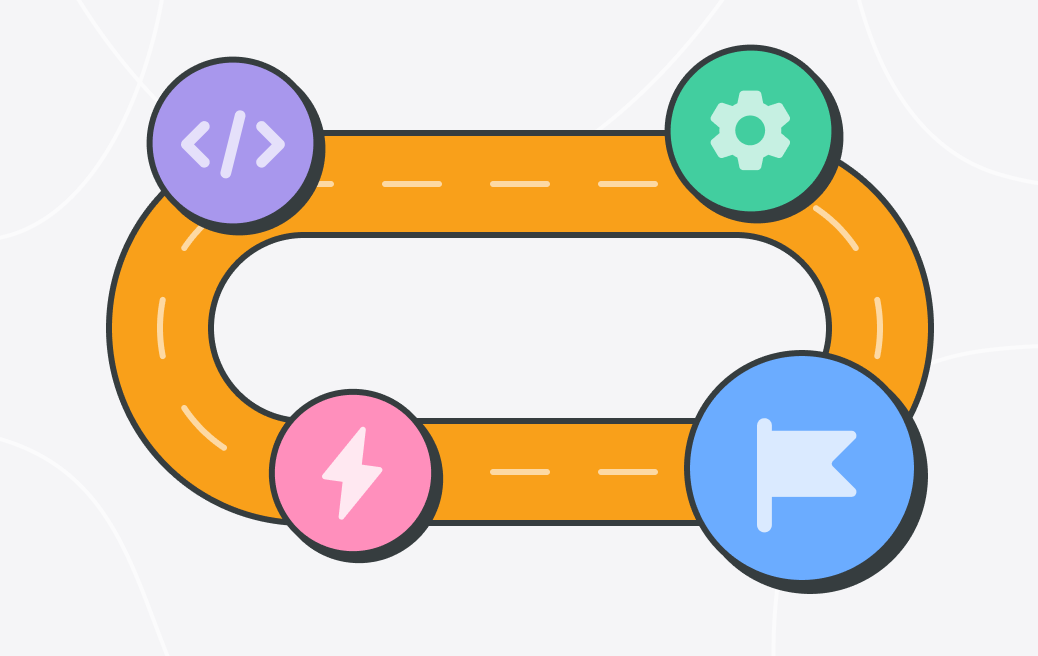How to use exploratory testing for superior software development
Georgina Guthrie
May 13, 2022
As a developer, you know the best way to find bugs is to test your code as you write it. But even the most thorough testing can miss things, so the more testing you can do, the better. Exploratory testing is a type of manual testing that goes beyond what’s possible with standard automated tests.
It involves exploring the software more efficiently — and it’s worth your time. Here’s what you need to know about this Dev team essential.
What is exploratory testing?
The short answer? Exploratory testing helps you find bugs faster.
With most quality testing, test cases are based on pre-existing user stories. Test data is then structured to support these test cases. Often, this coverage is adequate from a technical perspective but overlooks edge cases, which come up during User Acceptance Testing (UAT) or production use.
Exploratory testing takes a different approach, focusing on the quality of the product rather than adhering to a predefined test process.
The tester uses their expertise and understanding of the application to find new types of bugs. Developers do this by trying out various input values, following different paths through the application, or looking at the software from many perspectives.
Testers can play around with different user stories, add voice memos, annotate defects, and create documents as they go — all of which turn a user story into a test case. The result: greater flexibility, more comprehensive test coverage, and a higher quality product.
The importance of exploratory testing for CI/CD
These days, teams adopt continuous integration to get quality, bug-free products to market faster. While speed-to-market is important, it’s not everything. And as we’ve seen in the media, bugs can be disastrous, leading to data breaches, reputational damage, or loss of human life (as in the Boeing 737 Max tragedy).
With the rise of continuous integration and continuous delivery (CI/CD) practices, exploratory testing has become even more beneficial.
As organizations move to automated testing workflows, they need ways to perform manual tests in addition to automated ones. Exploratory testing enables developers to quickly identify bugs in their code and fix them before they can impact users.
By exploring different parts of your codebase and experimenting with new features, you can find bugs that automated tests alone might miss.
The advantages and disadvantages of exploratory testing
Let’s start with the reasons why exploratory testing could be beneficial for your product…
Advantages:
- One of the biggest benefits of exploratory testing is that it helps you find bugs early on in the development process. This can save you a lot of time and hassle since it’s much easier to fix bugs early on before they’re embedded in the product’s functionality.
- Exploratory testing is also a great way to get user feedback about new features or changes to the software. User insights can help you identify potential problems or areas that need improvement before the product is released to the public.
- Developers don’t need a detailed knowledge of the codebase to find and fix bugs. You can simply explore different parts of the software until you stumble upon an issue and work to resolve it as quickly as possible.
- Using project management tools as part of your testing means you can generate detailed reports and track the progress of your project. This enables you to see whether or not your team is meeting deadlines and helps you identify potential bottlenecks.
- Since you aren’t restricted to predefined test cases, you can find bugs that might otherwise go undetected.
- By spending less time writing and maintaining test cases, you can devote more time to testing the software.
- Testing in the context of a real user session enables you to find bugs that automated tests may miss due to differences in user behavior or browser quirks.
- Exploratory testing is often cheaper than other types of testing because there’s no need to write extensive test cases.
Disadvantages:
- Exploratory testing can be time-consuming, especially if you’re trying to test a large codebase. It can also be difficult to know where to start, and you could spend a lot of time on tasks that don’t produce results.
- Exploratory testing doesn’t focus on looking for specific issues, making it possible to miss some obvious bugs in your sessions. As a result, it yields the best results as an accompaniment to other types of software testing.
- To do exploratory testing effectively, you need a good understanding of the codebase and how it works. Otherwise, you may not know where to look for potential issues.
- Exploratory testing isn’t a substitute for comprehensive automated testing. It’s essential to conduct both tests to ensure your software is as bug-free as possible.
When should you use exploratory testing?
Exploratory testing is most useful during the development process when trying to find and fix bugs. It can also help try out new features or make changes to the software.
However, it’s important to note that exploratory testing is not a substitute for automated testing. You should always have both tests in place to ensure your software is as bug-free as possible.
When to say no to exploratory testing
If you’re short on time or need to focus on a specific problem, exploratory testing may not be the best option. It can be time-consuming, and it’s possible to miss some obvious bugs.
Additionally, if you don’t have a good understanding of the codebase, you may not know where to look for potential issues. In these cases, it may be best to say no to exploratory testing and focus on other types of testing instead.
But if you have the time and resources available, exploratory testing can be a valuable tool worth considering.
How to run an exploratory testing session
If you’ve never done exploratory testing before, it can be helpful to follow a set of steps to ensure you cover all the important elements. Here’s a basic overview to help you on your way.
1. Choose a feature or area of the software to test
Start by selecting a specific feature of the codebase you want to explore. This could be a new feature you’re planning on releasing or simply a part of the codebase you haven’t looked at before.
2. Write down your goals for the testing session
Once you’ve selected the area you want to explore, write down your goals for the testing session. What do you hope to achieve? Think about any specific issues or bugs you want to find, and consider the type of feedback you want to gather from users.
3. Explore different parts of the codebase
Now, it’s time to start exploring the software. This can include trying out different features, making changes to existing code, or adding new features if you have access to that part of the codebase.
4. Take notes as you go
While exploring the codebase, it’s important to take detailed notes about any bugs or issues you find. Be sure to include as much information as possible, such as steps to reproduce the issue, what you were doing when you found it, and any possible workarounds.
5. Report your findings
Once you’ve completed your exploratory testing session, it’s time to report your findings. Write up a detailed description of the bugs and issues you found, along with any suggestions for potential fixes or improvements. You may also want to share your notes with other developers or testers to get additional feedback on your findings.
6. Repeat
Ready to test more? Go back to step one and repeat these steps for all the areas of your codebase you want to explore.
Best practices for exploratory testing
Keep the following best practices top of mind when doing exploratory testing:
- Always start with a clear goal: clearly define the goal before you begin the session. A specific purpose will help you focus your efforts and look for the right things.
- Take detailed notes: as you’re testing, be sure to document bugs or issues to keep track of your findings and make it easier to report back to Dev team members.
- Be creative: don’t be afraid to think outside the box when doing exploratory testing. Try to develop different ideas and approaches for exploring the codebase, and don’t be afraid to try an unconventional approach. “But we’ve always done it this way” should not be your guide.
- Talk to users: if possible, talk to your users or get feedback from real-world customers during exploratory testing. Client feedback offers valuable insights into how your software is being used and the issues you should prioritize.
- Be patient: don’t expect to find every single bug in your codebase right away! Exploratory testing is a continual learning process, and you’ll get better at it over time. Be patient and keep exploring, and you’ll start to uncover more issues in your code.
- Use project management software: if you’re working on a large project with multiple developers, it’s helpful to use project management software to keep track of your testing sessions. This can help you coordinate your efforts and ensure everyone knows who’s working on each testing task.
Final thoughts
Whether working on a brand new product or improving an existing codebase, exploratory testing gives Dev teams a way to uncover hidden issues and release products with confidence.
Thanks to its ability to cover more ground and find bugs that automated tests might miss, exploratory testing is essential for any developer working in a CI/CD workflow. And by following these best practices, you can design thorough and collaborative exploratory sessions to ensure your code is bug-free and ready to roll.


